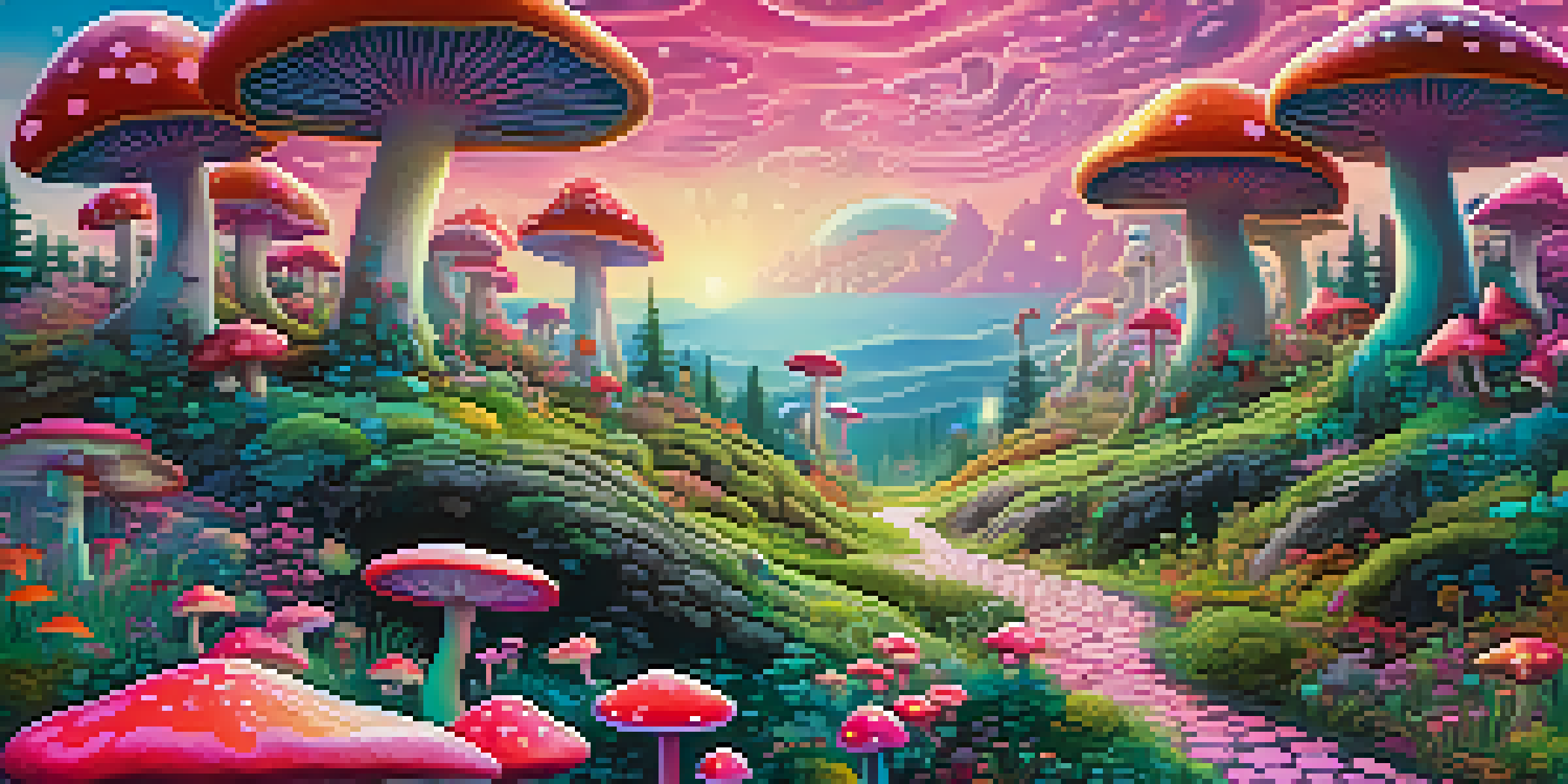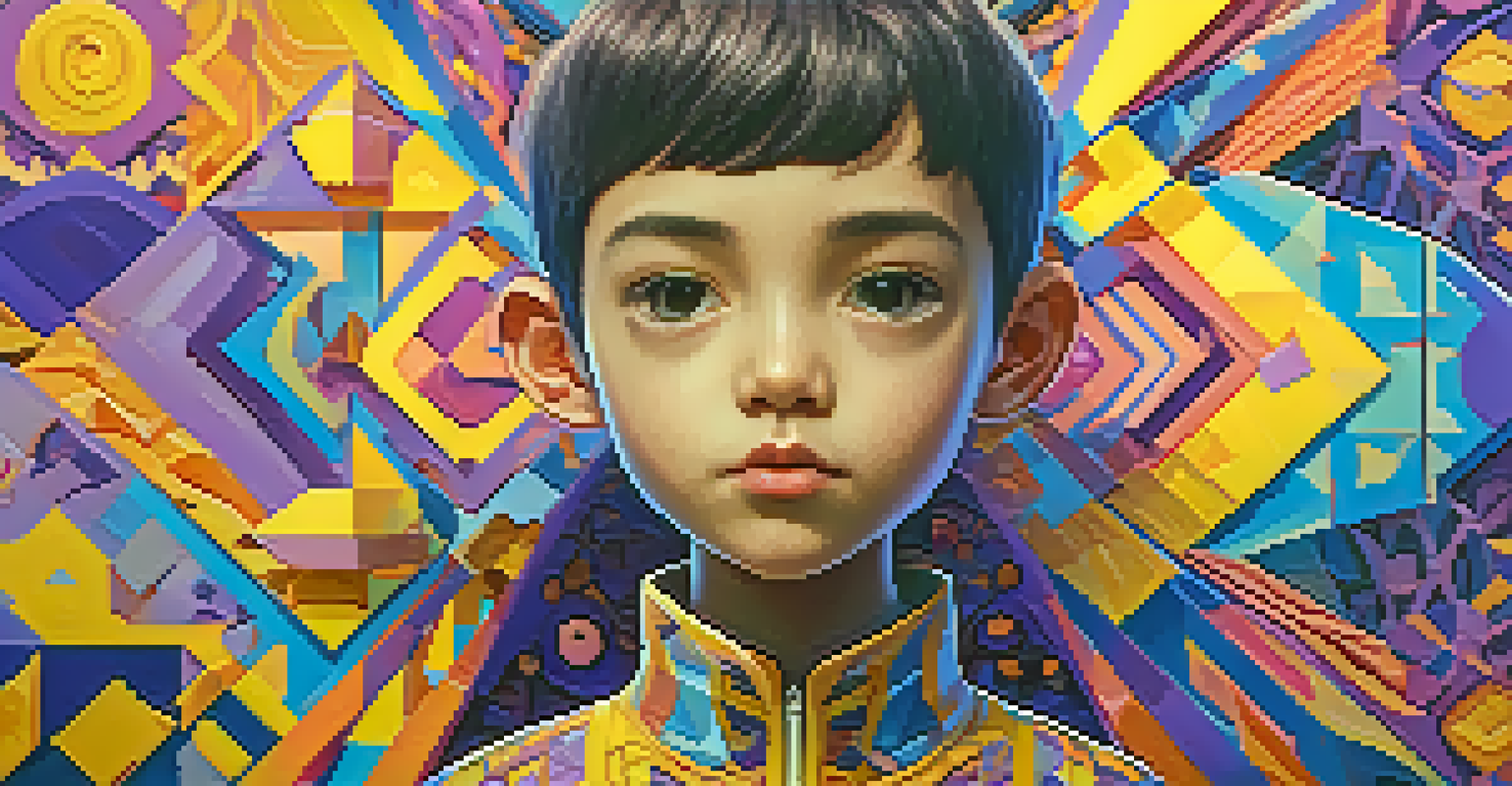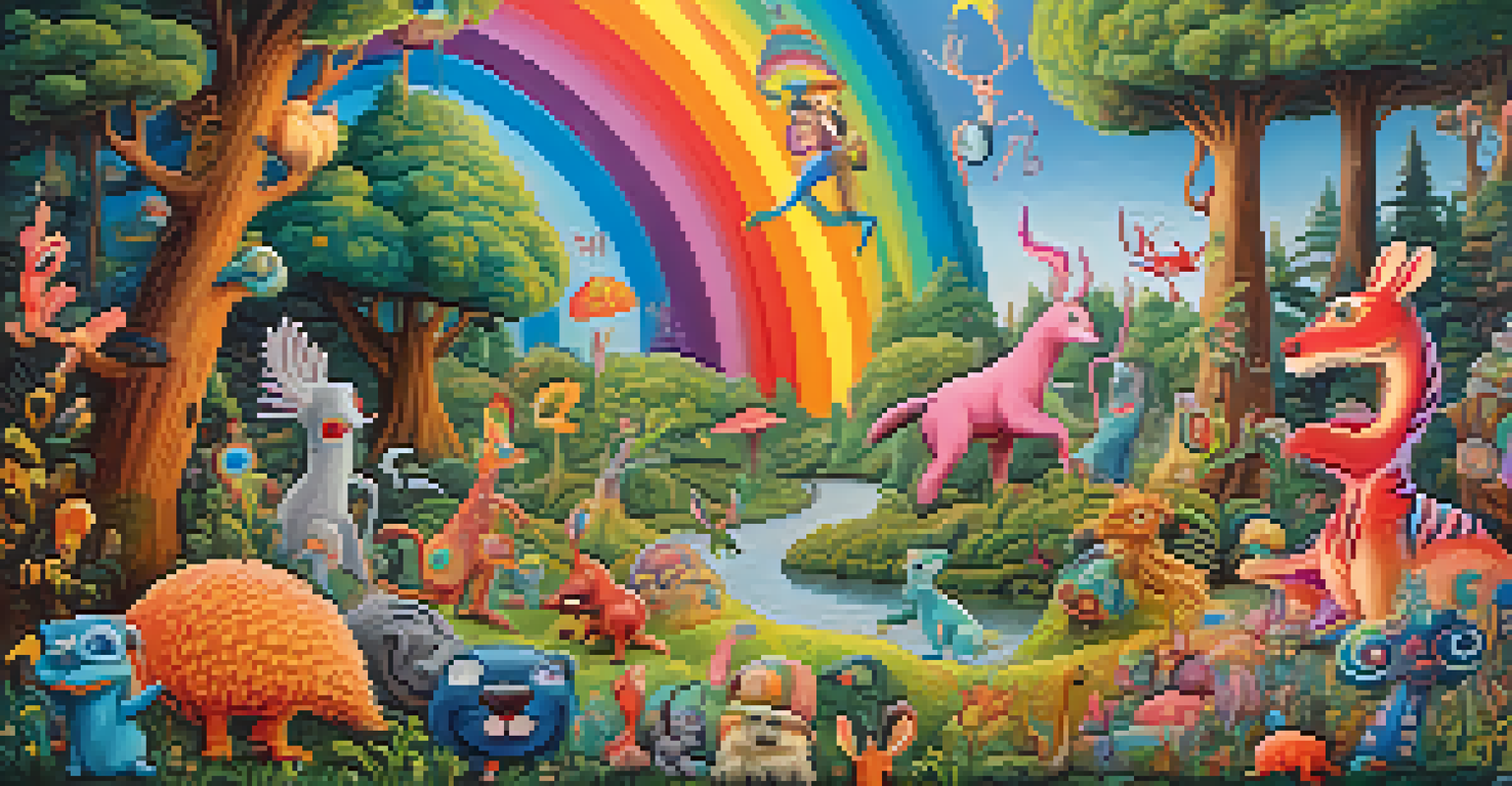Psychedelia in Animation: Entheogens in Cartoons

Understanding Psychedelia and Entheogens in Animation
Psychedelia, characterized by vivid colors and surreal experiences, often intersects with animation. The term 'entheogen' refers to substances that induce altered states of consciousness, typically used in spiritual contexts. In animation, these elements create a unique visual language that can express complex ideas and emotions. By diving into this realm, we can see how animated storytelling captures the essence of altered perceptions.
Psychedelic experiences can lead to profound insights and transformative shifts in consciousness.
Many cartoons employ psychedelic aesthetics to engage viewers, transporting them into fantastical realms. For instance, the swirling colors and bizarre characters in shows like 'Adventure Time' invite audiences to explore unconventional narratives. This not only entertains but also provokes thought, allowing for a deeper connection with the content. By using entheogenic themes, animators can challenge our perceptions of reality.
Furthermore, the incorporation of these elements in animation often mirrors cultural shifts and the exploration of consciousness. As society becomes more open to discussing mental health and alternative states of being, animation serves as a medium for these conversations. In this way, psychedelia in cartoons can act as a bridge, connecting viewers with profound themes while providing a visually stimulating experience.
Historical Context of Psychedelia in Animation
The roots of psychedelia in animation can be traced back to the late 1960s, a period marked by counterculture movements and the exploration of consciousness. Iconic animations like 'Yellow Submarine' utilized vibrant colors and experimental techniques to reflect the psychedelic culture of the time. This film not only showcased The Beatles' music but also became a visual manifesto of the era's ethos.

As the years progressed, the influence of psychedelia continued to manifest in various forms of animation. Shows like 'The Magic School Bus' and 'Ren & Stimpy' introduced quirky, imaginative visuals that resonated with younger audiences. These programs often used surreal imagery and humor to explore scientific concepts, subtly incorporating psychedelic elements into their narratives.
Psychedelia Enhances Animated Narratives
Psychedelic aesthetics in animation create immersive experiences that deepen storytelling and engage viewers on emotional and intellectual levels.
Today, the legacy of psychedelic animation is evident in contemporary works that push creative boundaries. Series such as 'Rick and Morty' and 'Midnight Gospel' not only entertain but also delve into philosophical questions about existence, reality, and consciousness. This evolution highlights how animation has become a canvas for exploring deeper themes, inviting audiences to reflect on their own experiences.
Psychedelic Aesthetics: Techniques and Styles
Psychedelic aesthetics in animation often rely on bold colors, fluid movements, and abstract designs to create an immersive experience. Techniques like rotoscoping and kaleidoscopic visuals contribute to the dreamlike quality that defines this style. By manipulating color saturation and incorporating unexpected transitions, animators can evoke the sensation of altered states.
Animation is not just a medium; it's a vehicle for exploring the depths of the human experience.
For example, the iconic animation style of 'Fantasia' blends classical music with stunning visuals, creating a sensory experience that resonates with psychedelic themes. The scenes featuring dancing flowers and swirling patterns serve as a visual representation of music's emotional impact. Such techniques allow viewers to feel a sense of liberation and exploration.
Moreover, contemporary animators continue to experiment with digital tools to push the boundaries of psychedelic visuals. Programs like Adobe After Effects enable creators to produce dynamic animations that challenge traditional storytelling methods. This ongoing evolution showcases the versatility of animation as a medium, inviting audiences to engage with content on multiple levels.
The Role of Entheogens in Animated Narratives
Entheogens play a significant role in shaping the narratives of animated shows, offering a unique lens through which to explore consciousness. These substances often serve as metaphors for self-discovery, transformation, and the search for meaning. By integrating entheogenic themes, animators can craft stories that resonate with viewers on both emotional and intellectual levels.
In 'Adventure Time,' characters frequently embark on journeys that reflect themes of growth and enlightenment, often paralleling the experiences associated with entheogenic use. These adventures encourage viewers to contemplate their own journeys and the lessons learned along the way. This connection adds depth to the storytelling, encouraging discussions about personal experiences and self-awareness.
Historical Roots of Psychedelic Style
The influence of psychedelia in animation dates back to the 1960s, reflecting cultural movements and evolving artistic expression through iconic works.
Additionally, the portrayal of entheogens in animation can challenge societal norms and spark conversations about mental health and spirituality. By normalizing these themes in a whimsical context, creators can invite audiences to reconsider their perceptions of altered states. Ultimately, these narratives serve to illuminate the diverse ways individuals can navigate their inner worlds.
Cultural Impact of Psychedelic Animation
Psychedelic animation has a profound cultural impact, influencing not just entertainment but also art, music, and fashion. The bright colors and imaginative visuals have inspired a generation of artists and creators to explore similar themes in their work. This cross-pollination of ideas fosters a vibrant creative community that continues to evolve.
Moreover, the resurgence of interest in psychedelia aligns with a broader cultural movement towards mindfulness and exploration of consciousness. As people seek alternative ways to understand themselves, animated content becomes a tool for self-exploration and reflection. This connection emphasizes the significance of animation as a medium that can inspire change and provoke thought.
Furthermore, the popularity of psychedelic animation in mainstream media reflects changing societal attitudes toward mental health and alternative experiences. This shift encourages open discussions about topics previously considered taboo, fostering a more inclusive environment. By embracing these themes, creators can contribute to a cultural landscape that values exploration and understanding.
Popular Examples of Psychedelia in Animation
Several animated series and films exemplify the use of psychedelia and entheogens, captivating audiences with their unique visuals and narratives. 'The Amazing World of Gumball' is known for its eclectic art style, blending various animation techniques to create a surreal viewing experience. The show's whimsical approach often mirrors the unpredictability of altered states of consciousness.
Another notable example is 'Midnight Gospel,' a series that combines deep philosophical discussions with vibrant, psychedelic visuals. Each episode explores complex themes like death and existence, all wrapped in a visually stunning package that challenges viewers' perceptions. This combination of thoughtful content and engaging aesthetics creates a memorable experience.
Future Trends in Psychedelic Animation
As technology advances and societal attitudes shift, the future of psychedelia in animation promises innovative storytelling that encourages dialogue on consciousness.
Lastly, films like 'Waking Life' and 'A Scanner Darkly' utilize rotoscoping to create dreamlike narratives that reflect the fluidity of consciousness. These films push the boundaries of animation, inviting viewers to question their understanding of reality. By weaving together philosophical concepts with innovative animation techniques, these works showcase the powerful potential of psychedelic storytelling.
The Future of Psychedelia in Animation
As society continues to explore the realms of consciousness, the future of psychedelia in animation looks promising. With advancements in technology, animators have more tools at their disposal than ever before, allowing for more intricate and imaginative visual storytelling. This evolution will likely lead to even more innovative approaches to conveying complex themes.
Moreover, as discussions surrounding mental health and alternative experiences become more mainstream, animated content can play a pivotal role in these conversations. By incorporating psychedelic elements into narratives, creators can foster understanding and acceptance of diverse perspectives. This shift highlights the importance of animation as a medium that can bridge gaps and inspire dialogue.

Ultimately, the future of psychedelia in animation will depend on the willingness of creators to experiment and push boundaries. As audiences increasingly seek content that challenges their perceptions, animators have the opportunity to craft experiences that resonate deeply. By embracing the unknown, the world of animated psychedelia can continue to thrive and evolve.